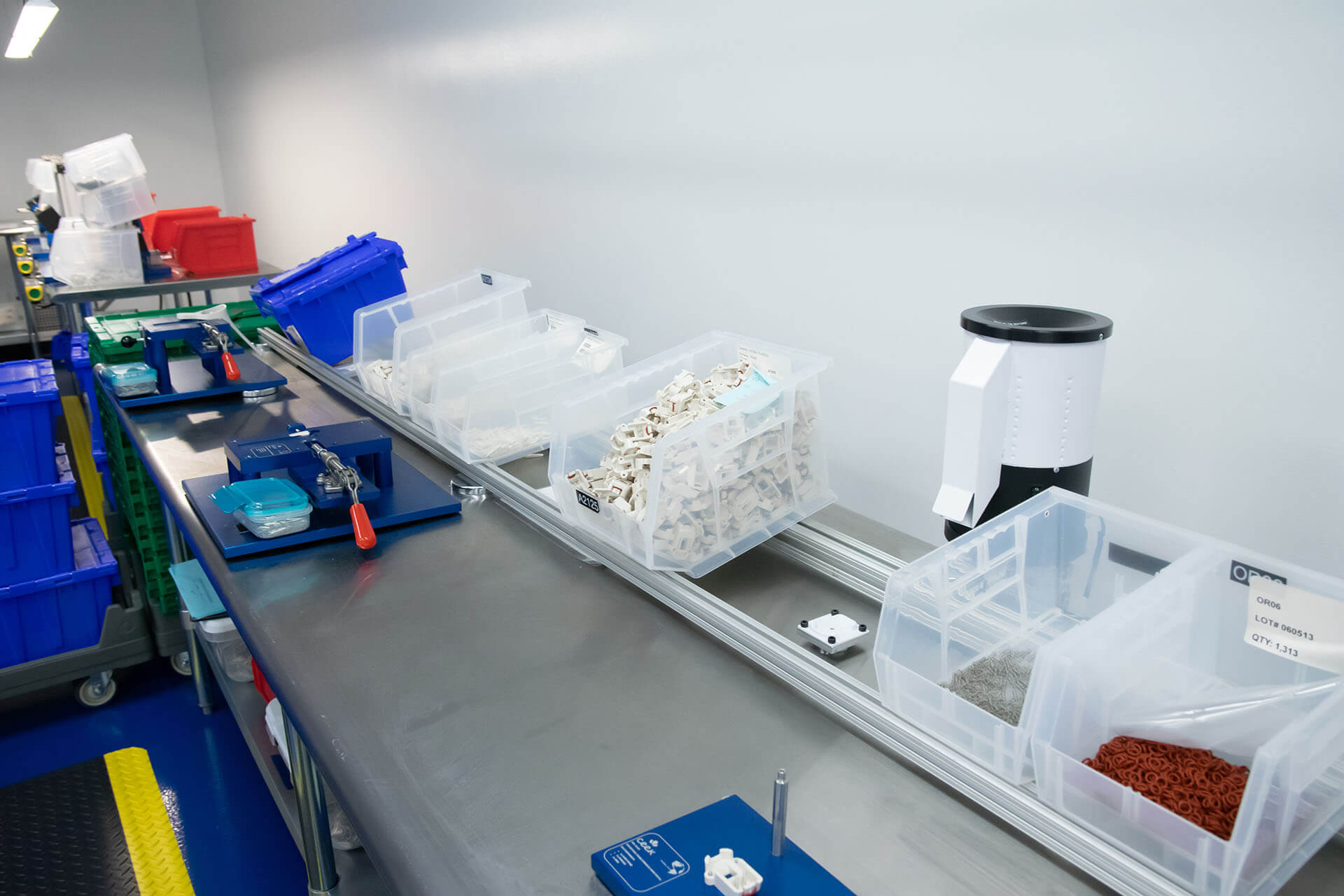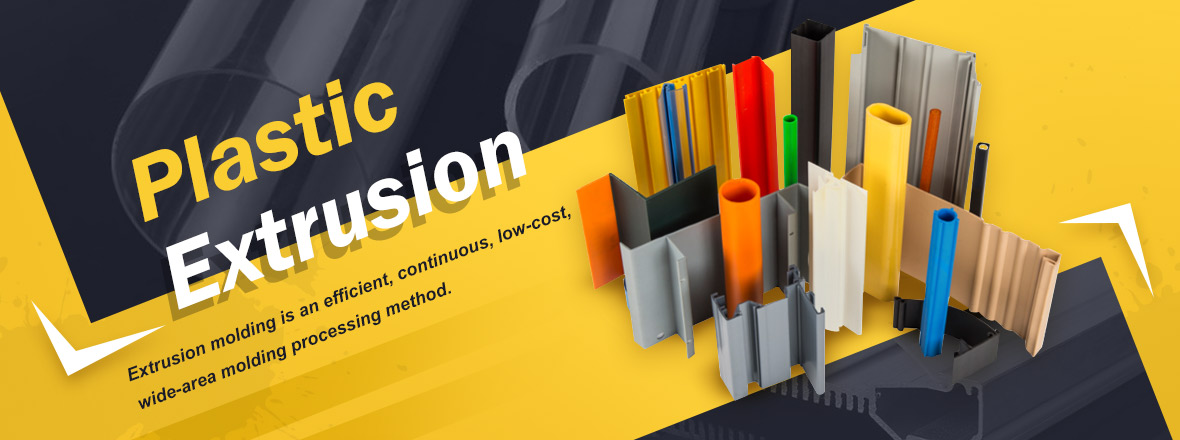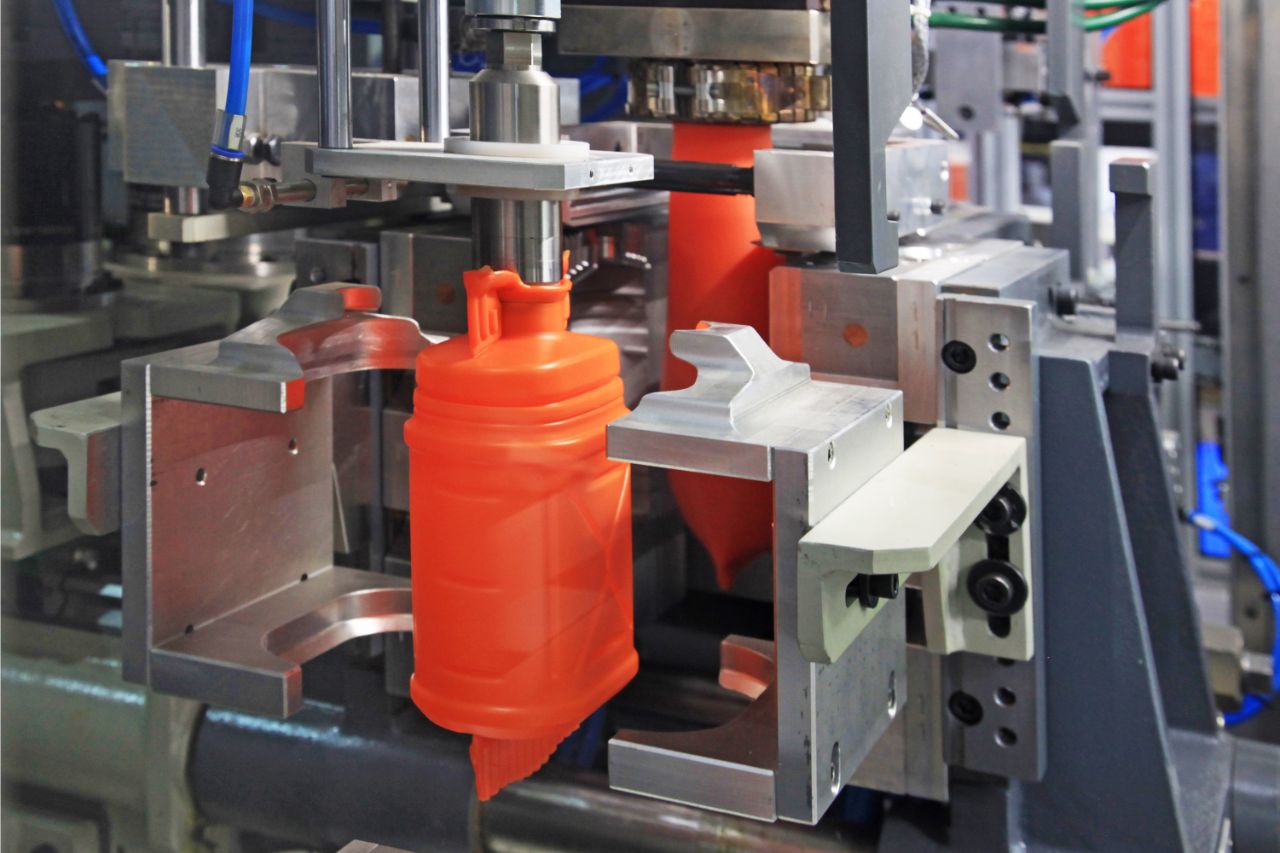The cost of plastic extrusion molding varies based on material, design, volume, and machinery, typically ranging from $1,000 to $10,000+.

Basics of Plastic Extrusion Molding
Plastic extrusion molding is a widely used process in the manufacturing sector to create consistent cross-sectional profiles for products. It’s prevalent in producing items like pipes, films, and various plastic parts. During this process, plastic material, typically in the form of granules or pellets, is melted and then forced through a die, taking its shape.
Definition and Process Overview
Plastic extrusion molding is defined as a high-volume manufacturing process wherein raw plastic is melted and formed into a continuous profile. The key steps include:
- Feeding: The raw plastic pellets or granules are fed into the extruder machine.
- Melting: An electrically heated barrel melts the plastic.
- Forming: The molten plastic is then forced through a die, giving it a particular shape.
- Cooling: Post-extrusion, the product cools and hardens, retaining its shape.
- Cutting or Rolling: Depending on the product, it may be cut into desired lengths or rolled onto spools.
For a deeper understanding, you can refer to the Wikipedia page on Plastic Extrusion.
Materials Commonly Used
Different plastics have distinct properties making them ideal for various applications. Commonly used materials include:
- Polyethylene (PE): Used for making bags, bottles, toys, and more.
- Polypropylene (PP): Common in automotive parts, consumer goods, and packaging.
- Polyvinyl Chloride (PVC): Widely used in window frames, pipes, and cable insulation.
- Polystyrene (PS): Popular for food packaging and disposable cutlery.
For a list of plastic types and their properties, check out the Wikipedia page on Plastic.
Types of Plastic Extrusion Molding Machines
The machinery used plays a critical role in the extrusion process. Different machines cater to varied requirements. Here are some common types:
- Single Screw Extruders: Ideal for most polymers and are widely used due to their simplicity.
- Twin Screw Extruders: These offer more flexibility and are often used for mixing and compounding.
- Ram Extruders: Commonly used for producing tubes.
Factors Influencing the Cost
The cost of plastic extrusion molding varies significantly based on numerous factors. Understanding these can help businesses budget effectively and streamline their operations.
Material Selection and Price
Materials can make a significant difference in the final product cost. For instance:
- Polyethylene (PE): Costs around $0.75 to $1.50 per pound. Its popularity is due to its flexibility and chemical resistance.
- Polypropylene (PP): Slightly more expensive at $0.85 to $1.65 per pound. It’s favored for its durability and resistance to chemicals.
- Polyvinyl Chloride (PVC): Prices range from $0.50 to $1.40 per pound. PVC’s wide usage is because of its adaptability in various applications.
You can read more about plastic materials and their properties on Wikipedia’s page on Plastic.
Machine Size and Capacity
The size and capacity of extrusion machines play a pivotal role in the cost:
- Small-scale Extruders: Can produce up to 100 pounds per hour, costing around $20,000 to $50,000.
- Medium-scale Extruders: With a capacity of 500 pounds per hour, their prices can range from $100,000 to $300,000.
- Large-scale Extruders: Designed for industrial purposes, they can produce upwards of 2000 pounds per hour. Their cost can skyrocket to $500,000 to $1 million.
Check the Wikipedia page on Extruders for more on machine specifics.
Labor Costs
Labor costs vary depending on the region and expertise. For example, in the U.S., the average hourly wage for a machine operator is about $15 to $25. A plant with 24-hour operations and two shifts would, therefore, spend approximately $720 to $1,200 on labor costs daily.
Energy Consumption
Energy is a critical factor. A medium-scale extruder consuming 50 kW/hour, operating for 20 hours a day at $0.10 per kW, will have an energy cost of $100 daily. Reducing energy consumption can be a significant cost-saving measure.
Mold Design Complexity
The complexity of the mold design can substantially influence costs:
- Simple Designs: May cost as little as $1,000 to $5,000.
- Moderately Complex Designs: Can range between $5,000 to $20,000.
- Highly Complex Designs: These designs, often requiring intricate details or special materials, can elevate the mold’s cost to $20,000 to $100,000.
For a comprehensive understanding of mold design’s intricacies, you might find the Wikipedia page on Mold (tool) useful.
Cost Breakdown
The cost structure of plastic extrusion molding is multifaceted, and understanding each component helps businesses strategize more effectively. Here’s a detailed breakdown:
Initial Investment Costs
When starting a plastic extrusion molding operation, the up-front costs can be significant:
- Machinery: A standard extruder can cost between $20,000 for small-scale models to over $1 million for industrial-grade machines with higher capacities.
- Molds: Depending on complexity, molds can range from $1,000 for basic designs to upwards of $100,000 for intricate or large-scale designs.
- Premises: Renting an industrial space can cost anywhere from $5,000 to $20,000 per month, depending on the location and size.
- Training and Setup: Ensuring that your workforce is skilled can set you back by $2,000 to $10,000, depending on the program’s scope and duration.
More on initial costs can be found on the Wikipedia page on Industrial Machinery.
Operational Costs
Operational costs are recurring expenses necessary to maintain daily operations:
- Materials: For a medium operation using Polyethylene (PE), the daily cost can be around $750 to $1,500, assuming a consumption of 1,000 pounds per day.
- Labor: As discussed earlier, daily labor costs in the U.S. can range from $720 to $1,200 for a two-shift operation.
- Energy: A medium-scale extruder with a consumption of 50 kW/hour, operating for 20 hours, will have a daily energy expense of $100.
- Waste Management: Disposing of or recycling waste materials can add $50 to $500 daily, depending on the volume and local disposal fees.
Maintenance and Repair Costs
Regular maintenance ensures optimal performance:
- Regular Maintenance: Routine check-ups, lubrication, and cleaning can cost around $200 to $500 monthly.
- Repairs: Depending on the machinery’s age and wear, yearly repair costs can range from $1,000 to $10,000.
- Mold Maintenance: Ensuring molds are clean and defect-free might incur a monthly cost of $100 to $1,000.
Understanding machinery maintenance is crucial, and insights can be drawn from Wikipedia’s page on Machinery Maintenance.
Miscellaneous Costs
These are often overlooked but are essential to consider:
- Quality Control: Implementing quality checks can add $500 to $2,000 monthly, depending on the complexity of tests.
- Insurance: Insuring your equipment and operation might cost $2,000 to $10,000 annually, depending on the coverage.
- Licenses and Compliance: Acquiring necessary permits and ensuring regulatory compliance can add $1,000 to $5,000 annually.

Comparing Costs with Other Molding Techniques
Each molding technique has its advantages, limitations, and costs. This section dives deep into the cost comparison of extrusion molding with other prevalent techniques.
Injection Molding vs. Extrusion Molding
- Setup Costs:
- Injection molding machinery typically ranges from $50,000 for a basic model to over $1 million for high-end, large-scale machines. On the other hand, extrusion molding machines can be acquired for as low as $20,000, making it a more affordable entry point.
- Mold costs in injection molding, especially for intricate designs, can range from $5,000 to $100,000, which is comparable to those in extrusion molding.
- Operational Costs:
- Injection molding can produce parts at a faster rate than extrusion, often completing a cycle in under a minute. This speed can result in lower per-piece costs, especially for large production runs.
- The material wastage in injection molding is generally lower, further reducing operational costs.
- Applications:
- Injection molding is more suitable for creating discrete items with complex geometries, while extrusion molding excels at producing long, consistent profiles like pipes or films.
For more details, refer to the Wikipedia page on Injection Molding.
Blow Molding vs. Extrusion Molding
- Setup Costs:
- Blow molding machines generally have a starting cost of around $25,000, with high-end models reaching up to $500,000. This makes the initial investment comparable to extrusion molding.
- Mold costs for blow molding tend to be lower than both injection and extrusion molding, ranging from $1,000 to $30,000.
- Operational Costs:
- The material consumption in blow molding can be higher, especially when manufacturing larger hollow objects.
- The production speed for blow molding is often slower than extrusion molding for items of similar size and complexity.
- Applications:
- Blow molding specializes in producing hollow objects, such as bottles or tanks, making it less versatile than extrusion molding in terms of product range.
To understand blow molding further, you can visit Wikipedia’s page on Blow Molding.
Rotational Molding vs. Extrusion Molding
- Setup Costs:
- Rotational molding machines typically start at around $40,000, with large-scale models costing upwards of $250,000.
- Mold costs for rotational molding are often between $2,000 and $20,000, which is on the lower end when compared to extrusion molding.
- Operational Costs:
- Given the longer cycle times of rotational molding, the production speed is slower, which can influence per-part costs.
- Material wastage in rotational molding is minimal, which can reduce overall operational expenses.
- Applications:
- Rotational molding is ideal for producing large, hollow objects with uniform wall thickness, like tanks or playground equipment, whereas extrusion molding is best for linear profiles.

Ways to Reduce Extrusion Molding Costs
Optimizing the extrusion molding process not only improves quality but can lead to significant cost savings. Let’s explore strategies to achieve these efficiencies:
Efficient Design Practices
- Simplify Geometries: Designing simpler profiles can reduce both mold costs and cycle times. For example, a basic rectangular profile can be 20% cheaper than a complex profile with numerous cut-outs and features.
- Standardize Mold Sizes: Using standard mold sizes can lead to savings of up to $5,000 per mold, as custom molds often require specialized manufacturing processes.
- Reduce Wall Thickness: By minimizing the material thickness where possible, material costs can drop by 10-15%, depending on the design. However, ensure it doesn’t compromise the product’s structural integrity.
More design insights can be found on Wikipedia’s page on Design for Manufacturability.
Material Optimization
- Use Recycled Materials: Incorporating recycled plastic can reduce material costs by up to 30%, depending on the quality and source of the recycled content.
- Material Blending: Blending expensive polymers with fillers or more affordable materials can result in a 15-20% material cost reduction.
- Reduce Waste: Implementing measures to minimize material waste during production can save up to $500 daily, depending on the operation’s scale.
Energy-saving Measures
- High-efficiency Motors: Using motors that operate at 90% efficiency or higher can lead to yearly energy savings of $2,000 to $5,000.
- Insulate Equipment: Proper insulation can reduce heat loss by 25%, translating to energy savings of $100 to $300 monthly.
- Optimize Machine Settings: Running machines at optimal settings ensures they consume the least amount of energy for the task. This can result in a 10-15% reduction in monthly energy bills.
For a deeper understanding of energy efficiency, visit Wikipedia’s page on Energy Conservation.
Training and Labor Efficiency
- Skill Development: Investing in training can increase worker efficiency by up to 20%, translating to labor cost savings of $144 to $240 daily for a two-shift operation.
- Automate Processes: Introducing automation for tasks like material feeding or quality checks can lead to a 10% reduction in labor costs.
- Reduce Downtime: Proper training can help reduce machine downtime by 15%, ensuring continuous production and minimizing idle labor hours.




